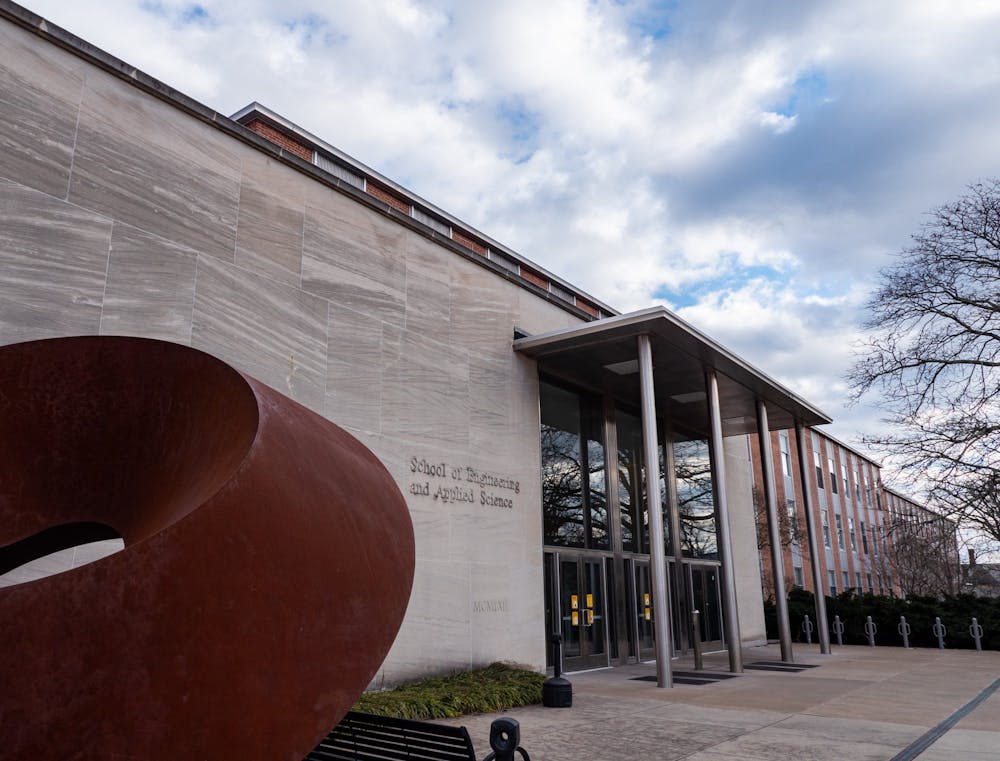For the first time since 2018, The Daily Princetonian sat down for an interview with University President Christopher L. Eisgruber ’83. The exclusive 45-minute interview with Eisgruber will be published in a two-part series this week. The following article expands on a portion of the interview.
In an interview with The Daily Princetonian on Friday, President Christopher Eisgruber ’83 said that if he had to pick just one top priority in his next five years at the helm of the University, it would be “rebuilding and fortifying our School of Engineering and Applied Science.”
“I think we’ve got a terrific group of faculty working in a 1962 building that looks depressingly like my high school,” Eisgruber said while sitting down with the ‘Prince’ in Nassau Hall.
“That's not the set of facilities we need for the 21st century, and you cannot be a great liberal arts university in the 21st century without having a great school of engineering,” he added.
Eisgruber told the ‘Prince’ that the expansion will enable the University to invest more in climate research.
“Climate is obviously one of the existential threats, but there are concerns about water, about biodiversity, about the air that we breathe and as our faculty have pointed out, these things are all connected in complicated ways,” he said. “So we think it's very important to invest in that research. Some of that will occur through the School of Engineering and Applied Sciences.”
Asked about this expansion happening within the wider trend of the humanities shrinking in popularity, Eisgruber said that he foresees engineering students taking advantage of the variety of academic opportunities available at Princeton.
“The humanities are essential to the liberal arts education that we offer at Princeton,” he said. “I suspect that Dean Andrea Goldsmith in the engineering school would agree that one of the great strengths of our engineering school is the opportunities for our engineers to engage in this broader liberal arts education,” he said.
Plans for expansion were announced in May 2021. In the short term, they include the construction of four new buildings by late 2024 to house the environmental science, bioengineering, and chemical and biological engineering, as well as an engineering commons. The building complex will be located between Prospect Avenue and Ivy Lane, previously occupied by faculty and staff housing as well as parking lots.
The expansion will also unite the Department of Computer Science into one building, which will be named after Eric Schmidt ’76 and Wendy Schmidt, who provided funding for the project. The building will result from extensive renovations and expansion of Guyot Hall.
A longer-term plan includes construction of a building for the Department of Electrical and Computer Engineering and “spaces for other engineering departments as well as programs central to the school’s mission.”
Clifford Brangwynne, a professor of chemical and biological engineering and a winner of the 2023 Breakthrough Prize in Life Sciences, told the ‘Prince’ that Eisgruber’s emphasis on the engineering expansion project as a top priority for Nassau Hall comes as “wonderful” news.

“President Eisgruber is right on the mark. It is no secret that technology — from the cell phones in our pockets, AI and blockchain, to vaccines, pacemakers, and engineered T cell cancer therapies — are changing our world at a dramatic pace,” he said in an email.
“Among the Ivies, Princeton has always uniquely supported engineering and is thus in a wonderful position to leverage our engineering strength to embrace and lead the next technological revolutions, particularly bioengineering which is poised for explosive growth,” Brangwynne added.
He finished by speaking on the future ramifications of the expansion.
“Leading in these areas, importantly within a liberal arts framework that looks at the big picture — political, ethical, historical, and societal implications — is exactly the right move for Princeton, this century and beyond,” Brangwynne said.
Sandeep Mangat is an Associate News Editor for the ‘Prince.’ Please direct all corrections to corrections at dailyprincetonian.com.
Correction: A previous version of this article implied that President Eisgruber’s presidency had a set end date. In fact, his presidency has been extended by at least five years. This article has also been updated to accurately reflect the use of the area between Prospect Avenue and Ivy Lane.








